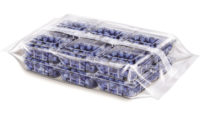Media “heavies” have pushed food waste in the national editorial spotlight. The New York Times, National Public Radio, and UK-based The Guardian are leading outlets delving into the issue with multiple articles. The coverage is increasing public awareness on the topic. It is an area where flexible packaging can have a positive impact. And tell a positive story to the public.
Here’s the thrust of what is being reported: Wasted food is not only costly; it is bad for the environment. According to a report from WRAP, the UK-based sustainability organization, total cost could be $400 billion annually. The waste also has a sustainability impact—especially from the resources used to grow food. In addition, food waste is also among the biggest producers of methane gas released to the environment.
Yet, even within this context, some consumers see packaging as worse than wasted food. Here, flexible packaging has a message that it offers plusses to consumers and the environment. Those plusses help reduce the impact of food waste.
The positives of flexible packaging are summarized in the FPA report, The Value of Flexible Packaging in Extending Shelf Life and Reducing Food Waste. It is available to members, and it shows how packaging reduces waste by extending shelf life. That’s a position many consumers do not understand. A study done by WRAP in the UK showed that six in ten consumers polled thought that fruits and vegetables degrade quicker in the package, and just 13% knew that storing food in its original packaging keeps it fresher for longer.
The FPA report delivers data that can raise flexible packaging’s value among consumers. Several examples are in the chart below where it shows just how dramatically packaging can reduce waste by keeping foods fresher longer. The emphasis on fresh fruits and vegetables is important because those categories generate the most food waste.
The FPA report goes on to suggest that some consumers are beginning to understand that packaging can reduce food waste. When consumers get data, their attitudes change. Evidence suggests a shift when they are provided positive, and factually correct, information about packaging. The message is: Flexible packaging allows food to stay fresher for longer – not just on shelves but in your home as well. That helps reduce food waste.
The graphic above is available with attribution to FPA. To download a copy, go to www.flexpack.org.









